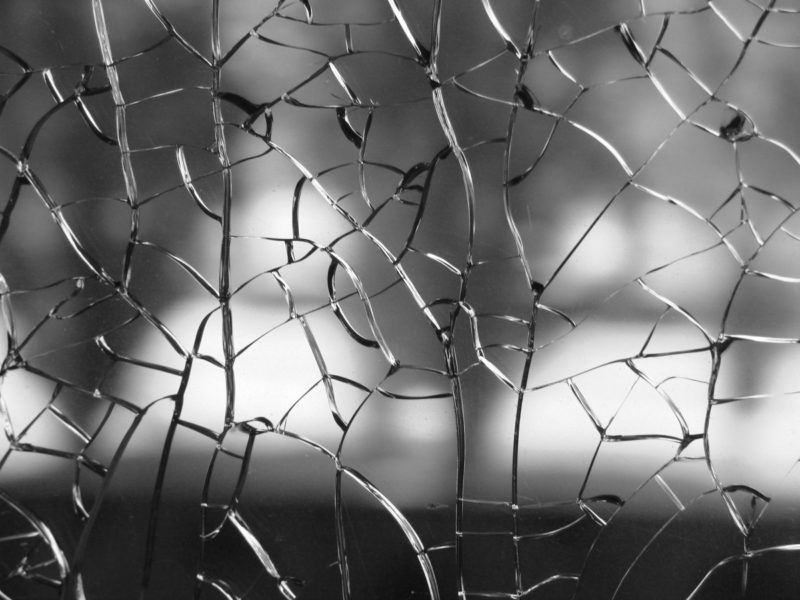Do you want to know if what causes a glass top stove to crack? A glass-ceramic electric cooktop does not cook as fast as an induction cooktop and is less common than a gas cooktop, but its features are helpful in homemakers who enjoy its sleek and smooth look.
However, it has the horrific risk that it is likely to fail because there are tendencies for it to crack. The two main reasons for glass cooktop fracture are the impacts of high pots and excess heat generated by one of the burners or hot spots produced by burnt food. Scroll down to find out more.

Tips To Prevent A Glass Top Stove To Crack
Glass stovetops are a popular choice with their sleek look and easy maintenance. They heat rapidly and evenly in contrast with electric coils, but they have some downsides! First, they are prone to break because of their fragility. These fractures might be pretty damaging, and they can make your stove useless. The following recommendations help you understand why glass top stoves break down and how you can avoid headaches.
Tip #1. Use the right cookware
A heavy pot on a glass cooktop may break the glass, which is one reason why it is not suggested to use heavy cast iron equipment, but there is another reason. Irregular surface pots and panels, including cast iron, create tiny scratches when moved. Glass can be weakened to the point of shattering by a micro scratch, like a score mark.
The conventional way of cutting glass is after all to pick it up and break it down on the score line.
Those best kinds of glass cooktops and pans are high-quality aluminum, titanium-stainless steel, or high carbon steel and have flat, smooth bottoms. Porcelain, stone, ceramic, and cast iron are among the most susceptible materials. It would also help avoid enamel cookware unless authorized on glass surfaces because enamel may melt and adhere to the warm glass.
Tip #2. Maintain cleanliness while cooking
Since food smears can be baked on the surface of a glass cooktop, maintaining it clean is essential. When hot areas are generated, it can rupture the glass. The carbonized food is an insulating agent that prevents heat from escaping and forces it to return to the glass, creating a collapse of tension.
Tip #3. Do not use abrasive cleaners
Particles in granular cleansers are the same as tiny particles below the cookware. They might result in fractures. Never use scouring powder or anything else abrasive to clean the top of your stove. Even if the abrasive cleaning does not cause a broken oven, the minor scratches overlap the surface and lead to cracks. Instead, merry Maids recommends sprinkling white vinegar from a spray bottle with a microfiber cloth.
Mix some baking soda with the vinegar if you need a harder cleaner, cover the top of the stove with a moist cloth, and leave it to soak for 10 minutes before cleaning. Scrape burnt-on food with a razor blade to prevent breaking in a warm location.
Factors That Commonly Causes A Glass Top Stove To Crack
What causes a glass top stove to crack? As with many glass products, collisions and extreme temperatures are the two most prevalent sources of damage. Knowing these hazards might assist you in being cautious in the kitchen and avoid breaking your oven. But before that, save this article for later so you’d learn more about the things you should avoid with a glass top stove. Now, let’s continue.
#1. Cookware used
While ceramic glass furnace tops are robust, they are not impermeable to heavy items. It is unsafe to drop or bang a big object on it. Micro-scratches develop when abrasive pots and cups are dragged across the glass. In addition, the integrity of the glass might be affected to the point of disruption if it builds up over time.
#2. Excessive temperature and heat fluctuations
One of the reasons your glass top stove crack is heat, and some cookware will keep the heat longer. This increased exposure to heat might create enough stress to fracture the glass. Food heated on the surface might also cause hot spots to fracture. When the glass melts products such as enamel cookware or plastic utensils, the same happens.
When cold glass is subjected to rapid heat, a thermal shock occurs. Hot pots are a typical cause of cracking on a cold glass surface. The effects are frequently strong and rapid.
How Much Does Replacing A Top Glass Stove Cost?
Each heating element has a temperature restriction on an electric stove, which protects the element from becoming overheated. If this restriction fails, it may get enough heated to break the glass.
Sometimes, you may modify the border, but you may have to replace the component, border, and stovetop. A glass top stove costs around $200 to replace. Sometimes, it can be more worth replacing the top glass than spending over 1000 dollars on a new stove. On the other hand, you might be interested to know how much is my antique stove worth. Nevertheless, that is all.
It’s A Wrap!
You must know what causes a glass top stove to crack so that you can avoid them. Please remember that it is hazardous to use a damaged stove! Even minor fractures increase electrocution risk. You can fix the small cracks on the glass-ceramic surface, but if impossible to restore, you will need to purchase a new cooktop if you have some time. This article is about how to fix the orange flame on the gas stove later help you.

is there a guide that shows the differant cracks and possible cause.